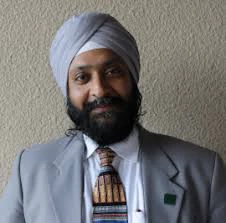
The last week of November 2017 stands out as a memorable and possibly unprecedented set of events. Lao PDR hosted the Gavi Vaccine Alliance board meeting for the first time ever and brought some of the world’s leaders in public health together in Vientiane. This was made even more unique by the fact that the government presented its UHC strategy to this audience and the key steps it is taking to manage the expected reduction in financial support provided by partners such as Gavi in the near future.
Despite the many challenges the country is facing, the government plans greater commitment from domestic financing, as well as innovating with the use of existing funds for greater impact with limited resources. The country also called upon the global health community to recognize that such a transition from external aid to domestic financing should be a shared responsibility - to ensure that gains made in public health outcomes remain sustained and strong, despite the transition.
The government of Lao PDR has taken planned transition from vaccine support by Gavi (which will happen over a five-year period until 2021) as a call for sustainable financing of the health sector, and as an opportunity to advocate internally for increased domestic funds and more sustainable program implementation.
Several impressive measures are underway. Lao PDR has become a leader among lower middle income countries in its information systems integration. It now uses a modern information system known as DHIS2 (District Health Information System version 2), which is now steadily combining program-specific information systems. Integration of various health services in the same village outreach session, as well as supervision of multiple programs at the same time are helping to share resources across multiple programs, contributing to efficiency and sustainability. The country has also adopted results-based financing approaches.
For the World Bank health team in Lao PDR, this was also an opportunity to join the Ministry of Health, and our partners from the government of Australia and Gavi, to host a special session on sustainable financing for UHC with a special focus on immunization financing in Lao PDR. This session featured presentations and discussions on our report, which highlighted key bottlenecks and opportunities in the country’s health system. The report is based on a health financing system assessment undertaken in the country. The knowledge from this report has already contributed to the Gavi transition planning process, and to the World Bank’s additional financing of its flagship Health Governance and Nutrition Development Project earlier this year - which was also discussed in this session chaired by the honorable Minister of Health, H.E. Assoc. Prof. Dr. Bounkong Syhavong. The co-financing of immunization strengthening activities by the World Bank, Australia and Japan together with parallel technical collaboration helps to ensure stronger and sustainable immunization services as part of essential health services package within an efficient and strengthened health system.
At the World Bank health team in Lao PDR, we remain excited by these promising developments, and yet humbled by the task ahead. We remain committed to working in tandem with our partners to provide our strong support to the Government of Lao PDR in its efforts towards UHC within the context of several ongoing changes in how health systems are financed and governed, and the multi-pronged efforts being made at strengthening these systems on the path to UHC.
Related links:



Join the Conversation